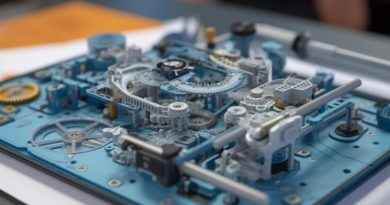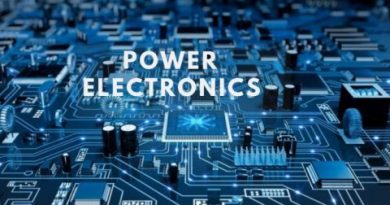What are Power Systems? Components, Working, Types, and applications?”
What are Power Systems? Components, Working, Types, and applications?
Table of Contents
Introduction to Power Systems
Major Components of Power Systems
- Electric Power Generators
- Transformers
- Transmission Lines
- Substations
- Distribution Lines
- Loads
Working Principles of Power Systems
- Power Generation
- Power Transmission
- Power Distribution
- Power Consumption
- Protection and Control
Types of Power Systems
- By Voltage Levels
- By Frequency
- By Number of Phases
- By Type of Current
- By Configuration
Power System Analysis
- Load Flow Analysis
- Fault Analysis
- Stability Analysis
- Harmonic Analysis
- Dynamic Analysis
Key Applications of Power Systems
- Utilities and Grids
- Industries
- Commercial Facilities
- Residential Buildings
- Transportation Systems
- Spacecraft and Satellites
Emerging Trends and Technologies
- Renewable Energy Integration
- Distributed Generation
- Smart Grids and Microgrids
- Energy Storage Systems
- Power Electronics Interfaces
- HVDC Transmission
Challenges in Power Systems
- Increasing Energy Demand
- Aging Infrastructure
- Grid Resilience and Reliability
- Cybersecurity Threats
- Environmental Concerns
Future Outlook for Power Systems
- Smarter and More Flexible Grids
- Increased Interconnectivity
- New Load Patterns
- Improved Efficiency and Sustainability
- Expanded Infrastructure
Conclusion
What are Power Systems? Components, Working, Types, and Applications
Introduction to Power Systems
Power systems refer to the combination of electrical components, interconnected networks, and control technologies that collectively generate, transmit, distribute, control, and consume electric power. Power systems provide the critical infrastructure enabling modern societies to utilize electricity that enhances the quality of life and drives economic growth. Understanding power system configurations, working principles, analysis, applications, and ongoing evolution provides key insight into this key engineering field.
Major Components of Power Systems
Power systems incorporate these main equipment categories:
Electric Power Generators
Convert mechanical, chemical, or other energy into electric power through electromagnetic induction.
Transformers
Step voltages up or down through magnetic coupling between windings, enabling power transmission over long distances.
Transmission Lines
Transport bulk power from generation to distribution over regional areas via overhead lines or underground cables.
Substations
Facilities containing equipment like transformers, switches, and monitoring that aid power transmission and control.
Distribution Lines
Cables and poles carry power locally from distribution substations to homes, buildings, and businesses.
Loads
The end users that consume or utilize the delivered electric power. Loads can be residential, commercial, or industrial.
Working Principles of Power Systems
Key functions govern power system operation:
Power Generation
Generating stations convert various energy sources like coal, natural gas, nuclear, solar, wind, hydro, etc. into electricity.
Power Transmission
Step-up transformers increase generation voltages to hundreds of thousands of volts for efficient transmission over long distances via transmission lines and towers.
Power Distribution
Step-down transformers reduce voltages to safer distribution levels like 120/240V. Distribution feeders split power among end users.
Power Consumption
Residential, commercial, and industrial loads draw power for uses like heating, lighting, computing, machinery, etc.
Protection and Control
Equipment like relays, breakers, switches, and monitoring systems protect assets while providing control capabilities.
Types of Power Systems
Power systems employ different standards and configurations:
By Voltage Levels
High voltage enables efficient transmission, while lower distribution voltages improve safety.
By Frequency
Most grids operate at 50/60Hz, but aircraft, ships, and some countries use lower frequencies.
By Number of Phases
Single-phase serves homes while three-phase handles large loads. HVDC is for bulk point-to-point transmission.
By Type of Current
AC networks are predominant but HVDC lines and DC microgrids offer benefits for certain applications.
By Configuration
Designs include radial distribution, grid networks, ring main systems, spot networks, and redundant feeds.
Power System Analysis
Analysis ensures reliable and optimized operation:
Load Flow Analysis
Models power flows and voltages throughout grid infrastructure.
Fault Analysis
Simulates effects of short circuits and open conductor faults.
Stability Analysis
Studies system transient behaviors and stability margins following disturbances.
Harmonic Analysis
Assesses waveform quality issues like distortions caused by non-linear loads.
Dynamic Analysis
Examines electromechanical oscillations and interactions between components.
Key Applications of Power Systems
Power systems serve vital needs:
Utilities and Grids
Interconnected transmission networks that supply entire regions reliably.
Industries
Process power and cogeneration for manufacturing, chemical refining, oil and gas, agriculture, etc.
Commercial Facilities
Office buildings, retail, hospitals, data centers, telecom facilities.
Residential Buildings
Homes, apartments, condominiums.
Transportation Systems
Railways, electric vehicles, aircraft, marine vessels.
Spacecraft and Satellites
Highly reliable space-rated solar and nuclear power systems.
Emerging Trends and Technologies
Ongoing power system advances include:
Renewable Energy Integration
Seamlessly incorporating clean generation like solar, wind, hydrokinetic, and biomass.
Distributed Generation
Smaller modular generation sites, including microgrids, improve resilience.
Smart Grids and Microgrids
Intelligent networks with automation, control, and data analytics.
Energy Storage Systems
Grid-scale batteries balance generation intermittency from renewables.
Power Electronics Interfaces
Power electronics provide better generator control, load conditioning, and grid support.
HVDC Transmission
Flexible high-voltage DC links improve transfer capacity and efficiency over very long distances.
Challenges in Power Systems
Key issues facing power systems include:
Increasing Energy Demand
Demand continues growing, necessitating new generation and delivery infrastructure.
Aging Infrastructure
Much equipment is obsolete or nearing the end of its life, requiring upgrades and hardening.
Grid Resilience and Reliability
Withstand and recover from natural disasters, cyber attacks, and other threats.
Cybersecurity Threats
Protect industrial control systems against sophisticated hacking risks.
Environmental Concerns
Meet regulations limiting emissions while incorporating sustainable generation.
Future Outlook for Power Systems
The future grid will be:
Smarter and More Flexible
Intelligent systems balance generation and load dynamically.
Increased Interconnectivity
Seamless integration between AC and DC networks, microgrids, storage, and renewables.
New Load Patterns
Accelerated electrification creates more dynamic net load shapes.
Improved Efficiency and Sustainability
Lower losses, reduced waste, and cleaner distributed resources.
Expanded Infrastructure
New transmission to access renewables and meet growing demand.
Conclusion
Modern civilization relies on expansive and complex power systems for quality of life, security, and economic prosperity. Sustaining and enhancing power system services in a time of disruptive changes demands integrating new technologies while addressing evolving priorities like sustainability and resilience. As an essential field, power system engineering develops innovative solutions underpinning our energy future.
Frequently Asked Questions about Power Systems
What are some key components of a power system?
Major power system components are generators, transformers, transmission lines, substations, distribution feeders, and end-user loads.
What functions comprise power system working principles?
Generation, transmission, distribution, consumption, protection, monitoring, and control allow usable power delivery from source to load.
What are the advantages of higher transmission voltages?
Higher transmission voltages minimize losses, allow long-distance transport, and improve stability using less conductor material.
What analysis helps maintain reliable power system operation?
Critical analyses include load flow, fault, stability, harmonics, and dynamics studies. Modeling informs design, planning, and operations.
What technology innovations are shaping the future grid?
Key innovations include distributed energy resources, smart grid controls, power electronics, energy storage, HVDC, and microgrids.




